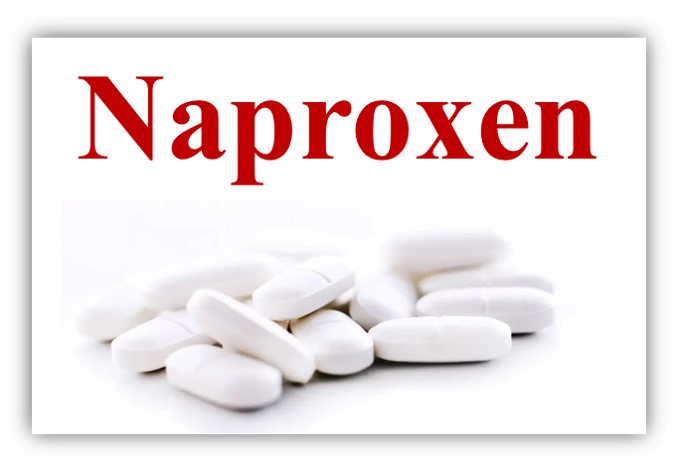OVERVIEW
Naproxen is a versatile medication for managing pain and inflammation, but it also has significant risks that need to be carefully considered. Regular monitoring by a healthcare provider is recommended for individuals using this medication long-term. Always consult a healthcare professional before starting or stopping any medication.
DOSAGE
Adult Dosage
Pain Relief:
- Initial dose: 500 mg
- Follow-up: 250 mg every 6 to 8 hours as needed
- Maximum daily dose: 1,250 mg
Arthritis
- Usual dosage: 250 mg to 500 mg twice daily
- Maximum daily dose: 1,650 mg for up to 6 months
Acute Gout
- Initial dose: 750 mg
- Follow-up: 250 mg every 8 hours until symptoms resolve
Menstrual Pain
- Initial dose: 500 mg
- Follow-up: 250 mg every 6 to 8 hours as needed
- Maximum daily dose: 1,250 mg after the first day
Fever:
- OTC dosage: 220 mg every 8 to 12 hours as needed
- May take an initial dose of up to 440 mg
Pediatric Dosage
Ages 12 and Older:
OTC Dosage: Up to 660 mg per day
Ages 2 to 12:
Recommended dosage: Approximately 20 mg/kg/day, not exceeding a total of 1,000 mg/day
MECHANISM OF ACTION
COX-1: This enzyme is constitutively expressed in many tissues and is involved in the production of prostaglandins that protect the gastric mucosa, support platelet function, and maintain renal blood flow. Inhibition of COX-1 may cause gastrointestinal side effects and increase bleeding risk due to decreased thromboxane A2 production.
COX-2: This enzyme is inducible and is expressed primarily at sites of inflammation. It produces prostaglandins that regulate pain and inflammation. Inhibition of COX-2 by naproxen is responsible for its analgesic and anti-inflammatory effects.
By blocking both COX-1 and COX-2, naproxen decreases prostaglandin levels throughout the body, resulting in:
- Decreased inflammation
- Reduced pain sensation
- Lowered fever
ADVERSE DRUG REACTIONS
Gastrointestinal problems: indigestion, heartburn, stomach pain, nausea, diarrhea, constipation and gas.
Central Nervous System Effects: Headaches, dizziness, and drowsiness.
Dermatological Reactions: Rash, itching, and fluid retention.
Auditory Symptoms: Ringing in the ears (tinnitus).
Cardiovascular risks: The risk of heart attack and stroke increases, especially with long-term use or in people who already have heart disease. Symptoms can include chest pain, shortness of breath, and sudden weakness on one side of the body.
Kidney damage: Possibility of acute kidney injury or kidney failure, especially in patients with existing kidney problems or dehydration.
Liver damage: Symptoms of liver damage can include nausea, stomach pain, jaundice (yellowing of the skin or eyes), and dark urine.
Serious skin reactions: Conditions such as Stevens-Johnson syndrome (SJS) and toxic epidermal necrolysis (TEN) can occur. These serious skin reactions require immediate medical attention.
Anemia: Naproxen can cause a low number of red blood cells, which can cause unusual weakness or tiredness.
DRUG-DRUG INTERACTIONS
Warfarin: Increased risk of gastrointestinal bleeding.
Aspirin: Concomitant use may increase the risk of ulcers and bleeding.
Other NSAIDs: Taking naproxen with other NSAIDs significantly increases the risk of gastrointestinal bleeding.
Lithium: Naproxen may increase lithium levels in the blood, which may cause toxicity.
Methotrexate: Co-administration may increase methotrexate levels, which may increase the risk of toxicity.
Diuretics: Naproxen may decrease the effectiveness of diuretics due to inhibition of prostaglandins, which play an important role in renal blood flow.
Cyclosporine: Increases the risk of kidney damage when taken with naproxen.
Antidepressants: Some antidepressant medications may interact with naproxen, which may increase the risk of bleeding.
Cholestyramine: This medicine may slow down the absorption of naproxen, which may delay its effects.
Oral Steroids: The risk of gastrointestinal problems increases when combined with steroids such as prednisone.
Heart Medications: Naproxen may interfere with blood pressure medications, reducing their effectiveness.
Alcohol: Consuming alcohol while taking naproxen increases the risk of gastrointestinal bleeding and ulcers.
Food: Taking naproxen with food may reduce gastrointestinal side effects, but does not significantly alter its absorption.
USE
Rheumatoid Arthritis: Reduces swelling and pain in the joints.
Osteoarthritis: Reduces symptoms associated with joint degeneration.
Ankylosing spondylitis: It mainly treats inflammation affecting the spine.
Gout: Manages acute attacks of gouty arthritis caused due to accumulation of uric acid.
Tendonitis and Bursitis: Reduces pain and swelling in inflamed tendons and bursae.
Menstrual Pain: Provides relief from cramps and discomfort during menstruation.
Acute Pain: Effective for mild to moderate pain from a variety of sources, including headaches, muscle aches, toothaches, and backaches.
Fever: Used to reduce fever in adults and children.


1 thought on “Naproxen”